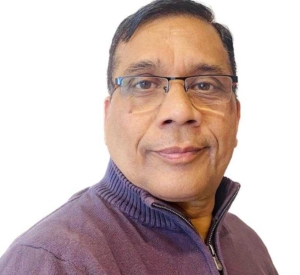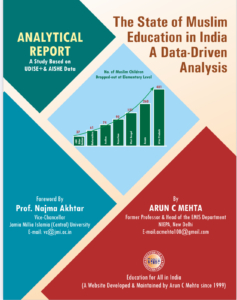Smart Teachers: Born or Made?
Challenges and Actionable Strategies for India’s Education System
Abstract
President Droupadi Murmu’s call for “smart teachers” during the National Teachers Awards on September 5, 2025, highlights their critical role in transforming India’s education system. However, with 10-15% of India’s 10 million teachers working as low-salaried para-teachers or contractual teachers, challenges like job insecurity, poor salaries, and agitations hinder their ability to embody empathy, innovation, and dedication. This scholarly article, aligned with educationforallinindia.com’s mission of equitable education, examines whether smart teachers are born or made, the systemic barriers – particularly for para-teachers – and actionable strategies for the National Council for Teacher Education (NCTE), National Council of Educational Research and Training (NCERT), and the Ministry of Education. It emphasizes follow-up actions to prevent ritualistic policy pronouncements, ensuring India’s teachers drive the National Education Policy (NEP) 2020’s vision of a global knowledge superpower.
Introduction
India’s school education system, serving over 247 million students, relies on its 10 million teachers to deliver equitable, high-quality learning. President Droupadi Murmu’s address at the National Teachers Awards on September 5, 2025, emphasized “smart teachers” who prioritize empathy, innovative pedagogy, and character-building over technological infrastructure like smart classrooms. Yet, 10-15% of teachers—approximately 1 to 1.5 million—are para-teachers or contractual teachers facing low salaries, job insecurity, and poor service conditions, leading to agitations in states like Bihar, Uttar Pradesh, and Jharkhand. These conditions undermine their potential to be “true teachers,” let alone smart ones. This article explores whether smart teachers are born or made, the unique challenges of para-teachers, and the reforms NCTE, NCERT, and the Ministry of Education must implement to align with NEP 2020 and educationforallinindia.com’s mission of education for all.
Are Smart Teachers Born or Made?
Smart teachers, as defined by Murmu, combine empathy, innovative pedagogy, and emotional-intellectual balance to foster student development. The debate over whether these qualities are innate or trainable is critical, especially for para-teachers.
- Innate Qualities: Empathy and emotional intelligence, key to building student trust, have a natural basis. Teachers like Narinder Singh in Punjab, who integrated local contexts into STEM lessons, demonstrate innate creativity. However, innate traits alone are insufficient without support.
- Training and Development: Skills like innovative pedagogy and classroom management can be cultivated through training. Samagra Shiksha’s in-service programs have enhanced pedagogy for 5.7 million teachers, showing training’s impact. Empathy can also be nurtured through reflective practices.
- Synthesis: Smart teachers blend innate potential with trainable skills. For para-teachers, training is critical to overcome financial and professional constraints, enabling them to emulate exemplars like Debajit Ghosh in Assam, who innovated with nutrition-integrated curricula.
Challenges in Producing Smart Teachers
The systemic barriers facing para-teachers and contractual teachers amplify the broader challenge of cultivating smart teachers:
- Low Salaries: Para-teachers earn ₹5,000-₹15,000 monthly, compared to ₹30,000-₹60,000 for regular teachers, forcing them to take additional jobs and limiting professional growth.
- Job Insecurity: Annual contract renewals and policy shifts, like those affecting 1.5 lakh Shiksha Mitras in Uttar Pradesh, create uncertainty and high turnover (30% in Jharkhand within five years).
- Poor Service Conditions: Lack of benefits like health insurance or paid leave, especially in rural areas, hinders focus on teaching.
- Agitations: Protests for regularization, such as those by 2 lakh para-teachers in Bihar affecting 70,000 schools, disrupt learning and morale.
- Limited Training Access: Only 20% of contractual teachers receive regular in-service training, compared to 50% of regular teachers, due to logistical and budgetary constraints.
- Low Professional Status: Teaching’s declining appeal deters talent, with only 15% of Indian youth considering it desirable, compared to 40% in Finland.
These conditions make it nearly impossible for para-teachers to embody the empathy, innovation, and dedication required of smart teachers.
Actionable Strategies for NCTE, NCERT, and the Ministry of Education
To transform para-teachers and contractual teachers into smart teachers, coordinated reforms are essential:
National Council for Teacher Education (NCTE)
- Tailored Training: Develop flexible, low-cost training programs for para-teachers, focusing on empathy and contextual pedagogy, delivered via mobile units and DIKSHA.
- Regularization Pathways: Offer permanent roles upon completion of certified training, like NIOS’s D.El.Ed., to boost commitment.
- Quality Assurance: Strengthen oversight of teacher education institutes, addressing the 15% facility gap.
National Council of Educational Research and Training (NCERT)
- Low-Resource Modules: Create DIKSHA modules on low-cost teaching strategies, inspired by Debajit Ghosh’s contextual curricula.
- Mental Health Support: Include stress management training to help para-teachers cope with insecurity, enabling empathetic teaching.
- Case Study Dissemination: Share award-winning teacher stories to inspire para-teachers.[10]
Ministry of Education
- Salary Reforms: Raise para-teacher salaries to ₹20,000 monthly with benefits like health insurance, potentially reducing turnover by 20%.
- Regularization Policy: Implement time-bound regularization for qualified contractual teachers, addressing agitation demands.
- Samagra Shiksha Expansion: Increase funding to train 100% of para-teachers by 2030, prioritizing rural areas.
- National Campaign: Rebrand teaching as nation-building, offering incentives like rural service bonuses.
- Grievance Redressal: Establish state-level ombudsmen to resolve para-teacher concerns, reducing protests.
Preventing Ritualization
Without follow-up, Murmu’s vision risks becoming a ritual, as seen in past reforms. A task force with NCTE, NCERT, and Ministry representatives should monitor implementation, targeting 50% para-teacher training by 2028. Public reporting via UDISE+ and teacher feedback forums will ensure accountability.
Case Studies: Potential Amidst Challenges
Despite constraints, some para-teachers exemplify smart teaching:
- Ramesh Kumar (Bihar): Used low-cost science experiments to reduce dropouts by 15%, showing trainable innovation.
- Sunita Devi (Jharkhand): Integrated local folklore into literacy lessons, boosting engagement, a model for NCERT modules.
- Dr. Avinasha Sharma (Delhi): Her language labs for underprivileged students highlight the impact of training.
- Debajit Ghosh (Assam): Nutrition-integrated curricula in remote areas show adaptability scalable through support
Concluding Observations
Smart teachers, blending innate empathy with trainable skills, are vital for India’s educational transformation. However, the 10-15% of para-teachers and contractual teachers face low salaries, job insecurity, and poor conditions, making smart teaching unattainable without reform. NCTE, NCERT, and the Ministry of Education must implement salary hikes, regularization, tailored training, and societal rebranding to unlock their potential. By leveraging Samagra Shiksha and ensuring accountability, India can transform these educators into smart teachers, aligning with NEP 2020 and educationforallinindia.com’s mission of equitable education for all.
Suggested Readings
- Ministry of Education, Government of India. (2024). Samagra Shiksha Framework.
- National Teachers Awards Case Studies. (2025). Ministry of Education.
- Samagra Shiksha Teacher Training Reports. (2024). Ministry of Education.


